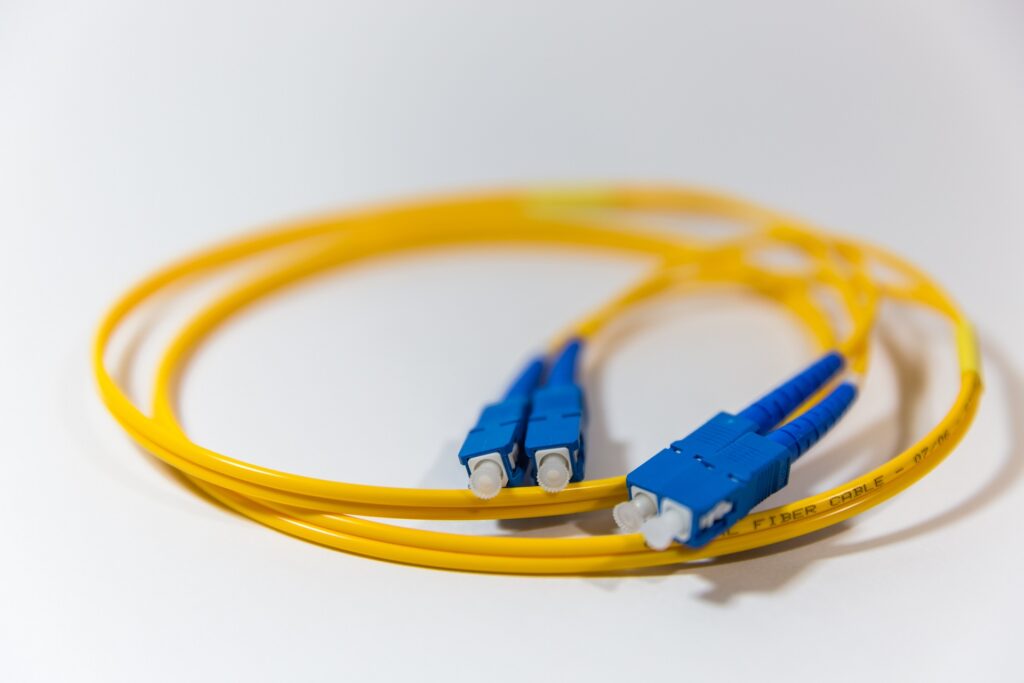
Single Mode
Single-mode fibre is a type of fibre optic cable that we commonly use in networking. It’s very thin, at 8-10 microns.
Fibre optic cables carry signals in the form of light. There are different methods to do this, called ‘modes’. Single-mode fibre uses only one mode, called transverse mode. This sends the light signal straight down the core, without bouncing it off the side walls.
Transverse mode results in very little of the signal being lost along the path. As a result, single-mode fibre is very useful for long-distance networks. In enterprise networking, single-mode can easily reach 40km or more.
Optical cabling connects to devices like switches and routers, using a transceiver. The transceiver is a module that is installed in the switch.
The transceiver needs to match the cabling type that you’re using. As an example, if you use single-mode fibre, then you need a single-mode transceiver.
Single-mode is more expensive to use, not so much because of the cables themselves, but because of the cost of the transceivers.